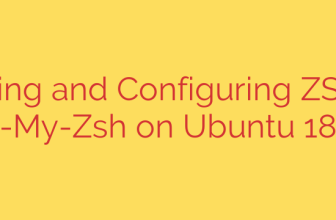
Mastering Google Cloud Network Security: A Guide to Essential Skills and Tools
As organizations accelerate their migration to the cloud, securing network infrastructure has become more complex and critical than ever. The traditional model of a secure perimeter has dissolved, replaced by distributed workloads, hybrid environments, and a sophisticated threat landscape. To navigate this new reality, professionals must master the advanced network security tools and strategies available within Google Cloud.
This guide outlines the essential skills and core technologies you need to protect your cloud infrastructure, ensure compliance, and build a resilient security posture.
The Shift to a Modern Security Paradigm
The fundamental challenge today is securing traffic not just at the edge (north-south) but also within your virtual private cloud (east-west). With applications and services communicating across different networks and regions, a robust security strategy must provide deep visibility and granular control everywhere.
This requires a move away from legacy approaches and toward a more integrated, cloud-native security model. The goal is to build a defense-in-depth strategy that protects applications and data from both external attacks and internal threats.
Core Pillars of Google Cloud Network Security
To build expertise in this area, focus on mastering the following key technologies and concepts that form the backbone of Google Cloud’s security infrastructure.
1. Adopting a Zero Trust Architecture
The foundational principle of modern cloud security is Zero Trust. This model operates on the philosophy of “never trust, always verify,” meaning no user or service is trusted by default, regardless of whether it is inside or outside the network.
- Key Skill: Implementing access controls and security policies that grant the minimum level of permission necessary. This involves securing every request as if it originates from an untrusted network. Google Cloud’s infrastructure is designed to help you build and enforce a Zero Trust framework effectively.
2. Defending the Edge with Cloud Armor
Your first line of defense is at the network edge. Google Cloud Armor is a Web Application Firewall (WAF) and DDoS mitigation service that protects your applications and websites from a wide range of cyberattacks.
- Key Skill: Configuring Cloud Armor policies to defend against common threats like the OWASP Top 10 vulnerabilities, SQL injection, and cross-site scripting. You should also be proficient in setting up rules to absorb and mitigate massive Distributed Denial-of-Service (DDoS) attacks, ensuring service availability.
3. Proactive Threat Detection with Cloud IDS
You can’t defend against threats you can’t see. Google Cloud Intrusion Detection System (Cloud IDS) provides network-based threat detection by inspecting mirrored traffic from your VPC network. It identifies and alerts on malicious activity, including malware, spyware, and command-and-control attacks.
- Key Skill: Deploying Cloud IDS endpoints to monitor critical network segments and integrating its alerts into your security information and event management (SIEM) system. Understanding how to analyze these alerts is crucial for a rapid incident response.
4. Granular Traffic Control with Cloud Firewall
Controlling the flow of traffic is essential for preventing unauthorized access and lateral movement by attackers. Cloud Firewall enables you to enforce granular, stateful firewall policies for your VPC network. It supports features like fully qualified domain name (FQDN) objects, threat intelligence, and geo-location objects to create highly specific rules.
- Key Skill: Implementing micro-segmentation using firewall rules to isolate workloads and limit the “blast radius” of a potential breach. Proficiency in writing and managing hierarchical firewall policies is a highly sought-after skill for securing complex environments.
5. Secure Outbound Connections with Secure Web Proxy
Protecting your network also involves controlling how your workloads access the internet. Google Cloud’s Secure Web Proxy allows you to apply granular access policies for outbound web traffic, preventing data exfiltration and blocking access to malicious sites.
- Key Skill: Creating and managing policies that define which external URLs and services your cloud resources are allowed to access. This is a critical component for enforcing corporate security policies and maintaining compliance in the cloud.
An Actionable Roadmap for Building Your Skills
Investing time in learning these technologies will significantly enhance your value as a cloud or security professional. Here’s a practical approach to building your expertise:
- Start with the Fundamentals: Ensure you have a strong understanding of core cloud networking concepts like VPCs, subnets, and routing.
- Learn the Principles: Deepen your knowledge of the Zero Trust security model, as it underpins all modern security strategies.
- Gain Hands-On Experience: Use lab environments or free-tier access to practice configuring Cloud Armor, setting up Cloud IDS, and writing sophisticated Cloud Firewall rules.
- Think Holistically: Learn how these services work together to create a multi-layered defense. For example, understand how Cloud Armor protects the edge while Cloud Firewall secures internal traffic.
- Stay Current: The cloud security landscape evolves rapidly. Commit to continuous learning to stay ahead of new threats and product updates.
By mastering these essential skills, you can effectively design, build, and manage a secure and resilient network infrastructure on Google Cloud, protecting your organization’s most valuable assets.
Source: https://cloud.google.com/blog/products/identity-security/master-network-security-google-clouds-latest-learning-path/








